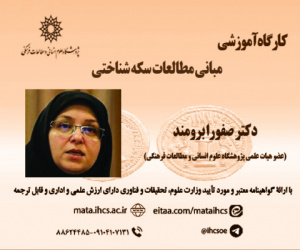تحلیل پیشران های مؤثر بر بازآفرینی بافت تاریخی شهری با رویکرد آینده پژوهی (مورد مطالعه: شهر کاشان) (مقاله علمی وزارت علوم)
درجه علمی: نشریه علمی (وزارت علوم)
آرشیو
چکیده
بافت تاریخی گستره ای هم پیوند از بناها، مجموعه ها، فضاها و یا تجهیزات شهری است که دارای آثار باارزش به جامانده از گذشتگان و جایگزین ناپذیری هستند که در آگاهی جوامع از گذشته و ارزش های فرهنگی خود نقش شایانی دارد. بافت تاریخی کاشان، همانند سایر بافت های قدیمی، عناصر کلیدی و فضاهای شهری متمرکزی دارد که شامل میدانچه ها، حسینیه ها، مساجد، بازارچه ها و آب انبارهاست. هدف از پژوهش حاضر بررسی پیشران های مؤثر بر بازآفرینی بافت تاریخی کاشان با رویکرد آینده پژوهی است. روش پژوهش از نوع اکتشافی- کاربردی است. گردآوری داده ها و اطلاعات به کمک روش های کتابخانه ای و پیمایشی بوده است. نمونه آماری این پژوهش شامل سی متخصص خبره در حوزه برنامه ریزی شهری بود که در دو مرحله متوالی به روش دلفی مورد پرسش قرار گرفتند. هر مرحله با مشارکت پانزده نفر از این متخصصان انجام شد. برای تحلیل و رتبه بندی عوامل کلیدی مؤثر بر بازآفرینی بافت تاریخی، از روش میک مک استفاده شده است. نتایج پژوهش نشان داد که ده عامل حکمروایی خوب شهری، تاب آوری شهری، تأسیسات زیرساختی، تزریق به موقع بودجه و اعتبارات، تکنولوژی های ساخت سریع، ارزان، تضمین امنیت سکونت در بافت، تشکل های محلی برای مشارکت، سرمایه اجتماعی، ظرفیت برای افزایش درآمد ساکنان و تعادل بخشی و عدالت اجتماعی جزو عوامل کلیدی و مهم برای توسعه بازآفرینی در شهر کاشان تعیین شده اند.Analysis of the Drivers Influencing the Revitalization of Urban Historical Fabric with a Futures Studies Approach (Case Study: The City of Kashan)
IntroductionThe historical fabric is an interconnected expanse of buildings, complexes, spaces, or urban facilities that contain valuable, irreplaceable remnants from the past, playing a significant role in raising community awareness of their history and cultural values. In our country, the historical fabric refers to that part of the urban structure formed before 1921 (1300 Hijri Shamsi). These areas, despite their significant identity value, generally suffer from physical decay, lack of safety standards, and inadequate urban services and infrastructure, leading to a lower status in terms of residence and location. Specifically, parts of Iranian cities formed up to the Qajar era can be considered historical fabric, representing a period before the transformative changes of the first Pahlavi era began.MethodologyThe research method is exploratory-applied. Data collection was conducted through library and survey methods. The sample for expert interviews (to analyze the driving forces) consisted of 30 individuals divided into two groups of 15, following the Delphi model. The Micmac method was employed to analyze and rank the key factors affecting the regeneration of the historical fabric. This method, rooted in foresight studies and strategic planning, aids in identifying and analyzing the drivers and dependencies related to overall decision-making.Results and discussionAfter screening the research variables, 38 variables were selected as initial influential factors for the regeneration of the historical fabric, categorized into five main factors (economic, social, physical, environmental, and managerial-institutional). These variables were analyzed using the Micmac software. According to the results, the distribution and dispersion of variables influencing regeneration in Kashan on the scatterplot indicated system instability. Thus, five categories of variables (influential variables, two-dimensional variables, regulatory variables, dependent variables, and independent variables) were identified and elaborated upon. The variables that had the most significant impact on regeneration development, as well as those two-dimensional variables (with both high influence and dependency on other factors), were identified as key factors. Therefore, the ten key and important factors for urban regeneration development in Kashan were determined to be: good urban governance, urban resilience, infrastructure facilities, timely budget and funding allocation, rapid and cost-effective construction technologies, ensuring residential security in the fabric, local organizations for participation, social capital, capacity to increase residents' income, and balancing and social justice.ConclusionThe structural development of the city of Kashan for the current and future state requires considering key factors in planning. For structural planning of urban redevelopment in Kashan, all factors involved in urban redevelopment planning are regarded as an interconnected system with integrated elements, and their interrelationships are assessed to identify the superior factors with the most significant influence. These key factors are then employed in urban redevelopment planning to ensure that the redevelopment system in Kashan results in the most sustainable development for the city. To achieve this, all components of social, environmental, economic, physical, and managerial-institutional factors are incorporated as a system.The factors that have had the greatest impact on redevelopment, as well as dual-impact factors (those that are both highly influenced by and have a significant impact on other factors), have been identified as key factors. Therefore, it can be stated that the redevelopment of historic urban fabrics is driven by a complex interaction of factors, including historical awareness, adaptive strategies, community participation, economic sustainability, and strong policy frameworks. Future research should continue to explore these drivers in various contexts to develop comprehensive models that address the unique challenges faced by cities undergoing redevelopment. By integrating these elements into planning processes, cities can create resilient environments that honor their past while embracing future scenarios.







